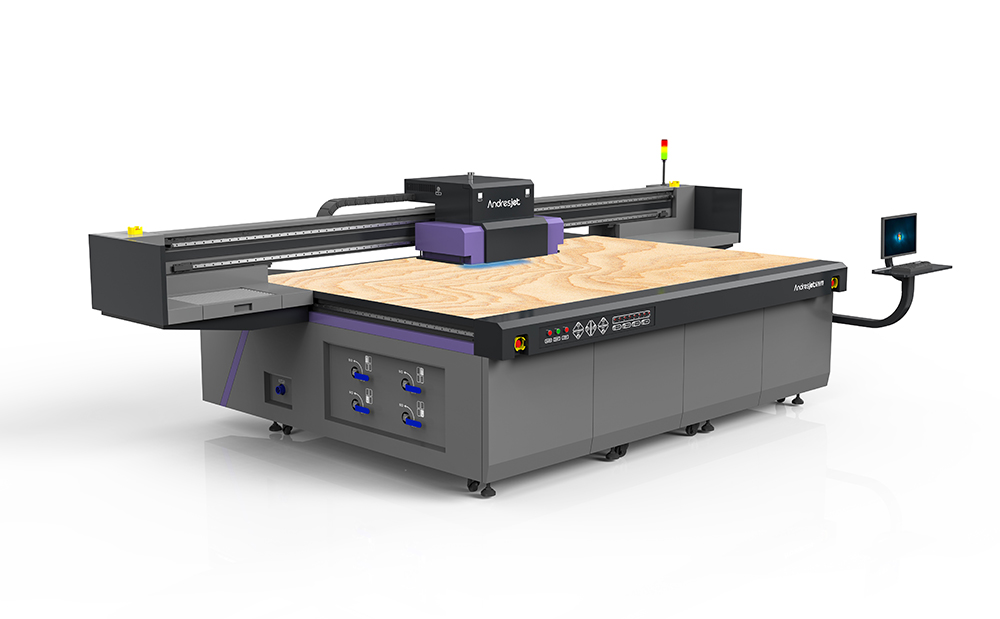UV Flatbed Printer: Applications in Packaging and Labeling
UV Flatbed Printer: Applications in Packaging and Labeling
In the realm of printing technology, UV flatbed printers have emerged as a game-changer, particularly in the packaging and labeling industry. These machines offer unparalleled versatility, precision, and efficiency, making them an ideal choice for businesses seeking to enhance their product packaging and labeling capabilities. This article explores the various applications of UV flatbed printers in packaging and labeling, highlighting their unique advantages and the impact they have on the industry.

Understanding UV Flatbed Printers
UV flatbed printers are a type of digital printing technology that uses ultraviolet (UV) light to cure or dry ink as it is applied to the substrate. This process allows for instant drying, enabling the printer to produce high-quality prints with vibrant colors and sharp details. The flatbed design accommodates a wide range of materials and objects, from rigid substrates like plastic, glass, and metal to flexible materials such as paper and film.
One of the key advantages of UV flatbed printers is their ability to print directly onto the surface of the material without the need for pre-treatment or priming. This not only simplifies the printing process but also reduces material waste and production time. Additionally, UV inks are known for their durability, resistance to fading, and scratch resistance, making them suitable for applications that require long-lasting prints.
Applications in Packaging
Customized Packaging Boxes
UV flatbed printers enable the production of highly customized packaging boxes with intricate designs, logos, and variable data printing. This level of customization is particularly valuable for brands seeking to differentiate themselves through unique and eye-catching packaging. From luxury goods to retail products, UV flatbed printers can handle a variety of substrates, including cardboard, corrugated board, and rigid plastics.
Flexible Packaging
In the realm of flexible packaging, UV flatbed printers offer the ability to print on films, pouches, and other non-rigid materials. This is crucial for industries such as food and beverage, where flexible packaging is ubiquitous. The printers can accurately reproduce brand colors and intricate patterns, ensuring consistency across packaging materials.
Prototype and Short-Run Packaging
UV flatbed printers are highly efficient for prototyping and short-run packaging production. They allow for quick turnaround times and cost-effective printing of small batches, making them ideal for product launches, limited-edition packaging, or testing new packaging designs before committing to larger production volumes.
Eco-Friendly Packaging
With the rise of environmental consciousness, UV flatbed printers contribute to eco-friendly packaging solutions. They enable the use of sustainable materials like recycled cardboard and biodegradable films, while the ink itself is often formulated to be environmentally friendly, containing low levels of volatile organic compounds (VOCs).
Applications in Labeling
High-Quality Labels
UV flatbed printers excel at producing high-quality labels with vivid colors and fine details. This is particularly important for products where label appearance is crucial, such as premium spirits, cosmetics, and gourmet food items. The durability of UV inks ensures that the labels remain vibrant and intact even under harsh conditions.
Variable Data Printing
The ability to print variable data is a significant advantage of UV flatbed printers in labeling applications. This feature allows for the inclusion of unique information on each label, such as serial numbers, barcodes, and expiration dates. Variable data printing enhances traceability and inventory management while also facilitating personalized marketing strategies.
Durable and Versatile Labels
UV flatbed printers can print on a wide array of label materials, including paper, polypropylene, polyester, and vinyl. This versatility makes them suitable for a variety of applications, from outdoor use where resistance to weathering is essential to indoor applications where chemical resistance might be required.
Security Labels
Security labels, such as tamper-evident labels and void labels, are critical for ensuring product integrity and preventing counterfeiting. UV flatbed printers can incorporate security features like hidden messages, watermarks, and micro-text into the labels, making them difficult to replicate.
Impact on the Industry
The adoption of UV flatbed printers in packaging and labeling has transformed the industry in several ways:
Faster Time-to-Market
The ability to quickly produce high-quality prints and prototypes has accelerated product development cycles, allowing businesses to respond rapidly to market trends and consumer demands.
Cost Efficiency
UV flatbed printers offer cost savings through reduced material waste, minimal setup times, and the ability to print short runs without the need for expensive plate-making processes.
Enhanced Branding Opportunities
The customization capabilities of UV flatbed printers enable brands to create unique and eye-catching packaging and labeling that resonates with consumers, enhancing brand recognition and loyalty.
Environmental Considerations
The use of eco-friendly inks and substrates, along with the reduced waste generated by digital printing processes, aligns with the industry’s shift towards more sustainable practices.
Conclusion
UV flatbed printers have revolutionized the packaging and labeling industry by offering unparalleled versatility, precision, and efficiency. Their ability to print directly onto various materials, produce high-quality prints with vibrant colors, and accommodate short-run and customized production makes them a valuable tool for businesses seeking to enhance their packaging and labeling capabilities. As the industry continues to evolve, UV flatbed printers will remain at the forefront, driving innovation and enabling businesses to stay competitive in a rapidly changing market.
